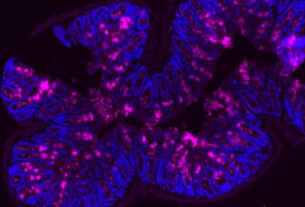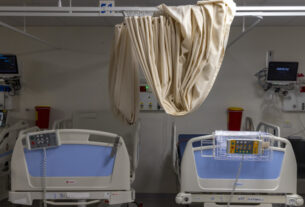There have been sharp increases in the amount of depression, anxiety, and post-traumatic stress disorder (PTSD) among both Jewish and Arab Israelis since October 7, according to a study conducted by researchers at Ruppin Academic Center near Moshav Kfar Monash and New York’s Columbia University.
The study, just published in the Lancet’s “EClinicalMedicine 2023,” found the prevalence of probable PTSD, depression, and anxiety in the weeks following the Hamas massacres (at 29% for PTSD) 42% for depression, and 44% for generalized anxiety disorder (GAD) respectively), almost double the prevalence recorded two months before the attack.
A sample of 710 individuals (362 female, 51.1%) aged 18 to 85 years old took part in this longitudinal national survey study.
“Israel came under a brutal, vast, and unprecedented terrorist attack led by Hamas. The magnitude of the October 7, 2023 attack in southern Israel was without precedent,” the researchers wrote. “While people facing disasters may manifest impressive levels of resilience, previous work on the detrimental effects of human-made disasters, such as terrorist attacks and war captivity, has documented a wide range of psychiatric disorders, including post-traumatic stress disorder (PTSD), depression, and anxiety,
“The prevalences of PTSD, depression, and anxiety are considerably higher than those reported in previous studies focusing on terrorist events, such as the 9/11 attacks and other attacks,” noted clinical psychologist Prof. Yossi Levi-Belz, who chairs the Lior Tsfaty Center for Suicide and Mental Pain Studies at the Ruppin Academic Center and led the study.
The barbaric terrorist attack was followed by all-out war, breaking nearly a decade of relative calm interspersed with short Israeli retaliation for rockets and missiles hurled by Hamas across the Gaza border.
Clear increases in anxiety disorders after October 7
The team found that the traumatic events had a more considerable impact on those already struggling with psychological difficulties. Specifically, the findings show that one of the robust predictors of psychological burden in the aftermath of the attack was the presence of pre-October 7 symptoms of probable PTSD, depression, and GAD.
Suffering from PTSD symptoms before the attack was found to double the risk of probable PTSD. These findings suggest the role that pre-attack psychological symptoms may have had in increasing the risk of short-term PTSD beyond demographic risk factors and direct exposure to the attack.
The authors said that the nationwide cohort study dealt with the limitations of previous research by using a prospective study design to evaluate the impact of the attack. The researchers used a wide range of probable outcome measures including PTSD, depression, and GAD, assessing a cohort of Israeli citizens, both Jews and Arabs, twice – six or seven weeks before the attacks and five to six weeks after the attacks.
Numerous studies have documented that traumatic events like war and armed conflicts can cause an alarming spike in post-traumatic stress and depression. Symptoms of PTSD were the most common effect of the 9/11 attacks on health in the US.
Up to 20% of adults directly exposed to the disaster or injured in the attack had PTSD symptoms five to six years after the attack. A decade after the attacks, 15% of the 70,000 enrollees in the World Trade Center Health Registry reported depression, and 10% reported both depression and PTSD.
Study coauthor Columbia Medical Center Prof. Yuval Neria said the findings underline the crucial importance of conducting an immediate assessment of those exposed to severe trauma that taking into account pre-attack psychological difficulties and psychiatric diagnoses in the aftermath of such a large-scale trauma.
“Moreover, nation leaders and policymakers should consider taking steps to allocate all resources to facilitate evidence-based treatments of affected civilians,” Neria added.
“Early to mid-term interventions must be made accessible to citizens as a whole, to promote self- and community efficacy, connectedness, and hope immediately after the attacks and during a massive military confrontation for both Israelis and Arab populations.”




